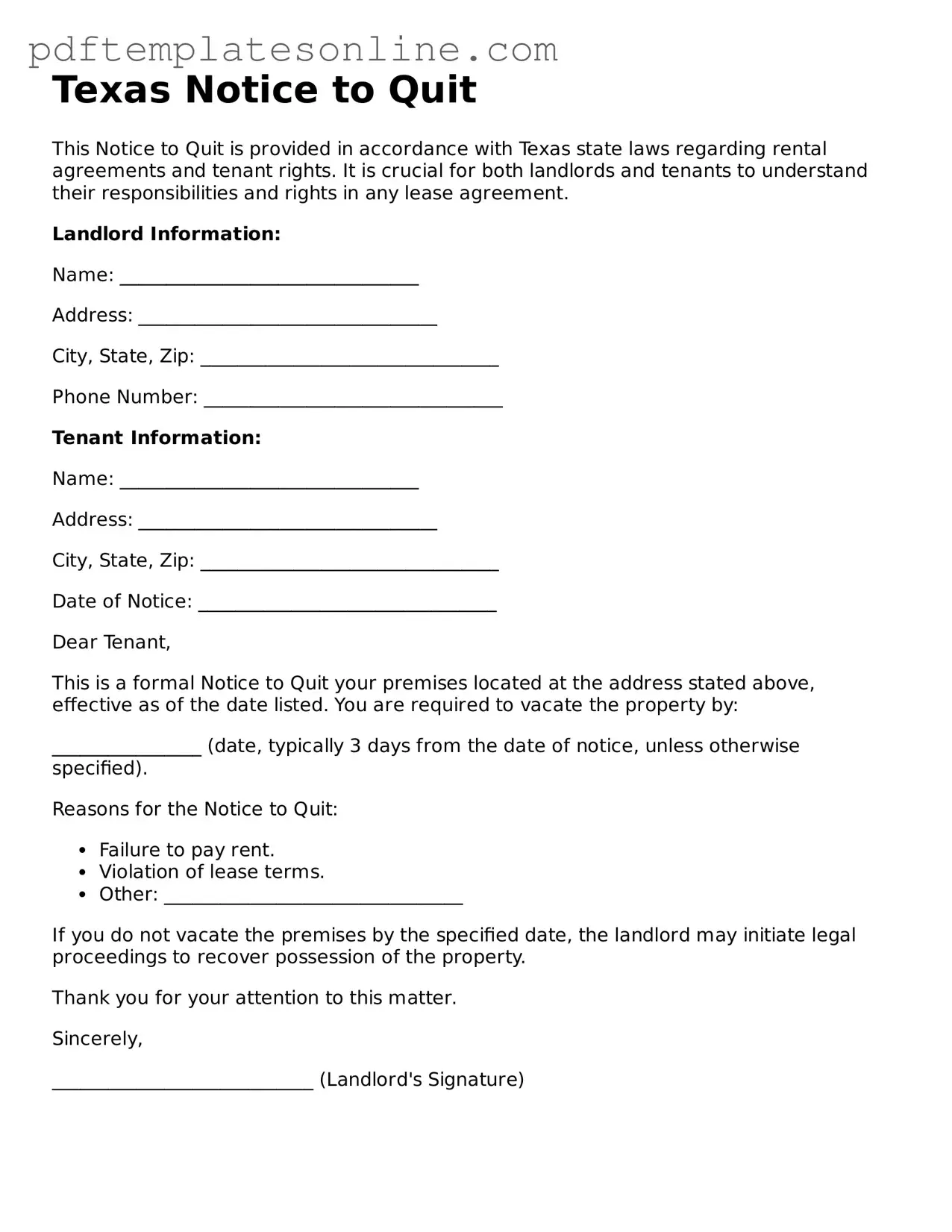Filling out the Texas Notice to Quit form can be tricky, and mistakes can lead to delays or complications. One common error is not providing the correct address of the rental property. This might seem minor, but it’s crucial for ensuring that the notice is valid. If the address is wrong, the tenant may not receive the notice at all, which can lead to misunderstandings and legal issues.
Another frequent mistake is failing to include the date on the notice. A date is essential because it marks when the notice was issued. Without it, the tenant might argue that they were not given enough time to respond or vacate the property. Always remember to write the date clearly to avoid any confusion.
People often forget to sign the Notice to Quit form. A signature is a vital part of any legal document. It shows that the landlord is serious about the notice and acknowledges the action being taken. Without a signature, the notice may be considered incomplete and ineffective.
In addition, some individuals neglect to specify the reason for the eviction. While Texas law does not require a reason in all cases, providing one can clarify the situation. It helps the tenant understand why they are being asked to leave and can prevent disputes down the line.
Lastly, many people do not keep a copy of the completed Notice to Quit form. This is a significant oversight. Having a copy serves as proof that the notice was sent and can be crucial if the situation escalates. Always make sure to keep records of all communications related to the eviction process.
